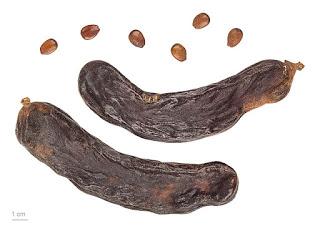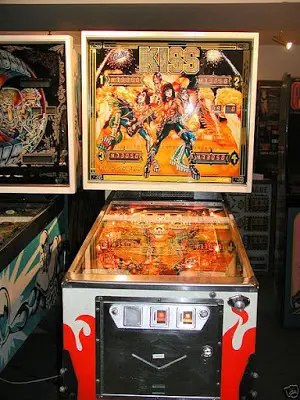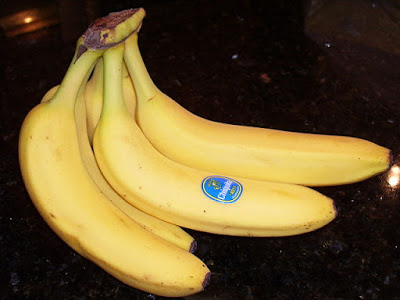 The weekly collection of useless and fun facts. In this week’s edition: Gems and Seeds, Banned Pinball Games, The Original Nintendo, Shakira’s Voice, and Eating Fruit Stickers.
The weekly collection of useless and fun facts. In this week’s edition: Gems and Seeds, Banned Pinball Games, The Original Nintendo, Shakira’s Voice, and Eating Fruit Stickers.
 |
| Wikimedia |
The weight of a carat (200 milligrams) is the standard unit of measurement for gemstones. It’s based on the weight of the carob seed from the carob tree. But how did this arise? It’s not really known how it started, but it is believed that the carob seed had a uniform weight or mass, making it good as a unit of measure. The measure of gold purity, the carat (UK) and karat (US) came about during the time of Emperor Constantine. A gold coin weighed 24 karats, or the equivalent weight of 24 carob seeds. That is where the common measure of 24 karat gold came from.
But there’s a problem with this system of measures based on the carob seed. There is a variation in the weight of each seed from a single pod of the carob tree. So how did it become such a relied upon method? A study in 2006 from the Royal Society: Biology Letters, looked at the problem. They discovered that human selection of uniform seeds might have played more of a role in using the seeds as a measure than the supposed uniform weight of the seeds themselves. They found that people were able to differentiate the differences in the weight of the seeds of around 5% just by using their eyes. That meant that everyone at the bargaining table left happy knowing they were using the same weight to measure their gold and jewels. Source
 |
| The Consumerist/Wikimedia |
Oakland, California had a ban on pinball machines for 80-years until 2014 when the city finally reversed the law. It had originally been enacted in the 1930’s since pinball machines were viewed as gambling devices and cities wanted to cut down on illegal gambling. The machines during that time were more of a game of chance and not skill, and they didn’t even have flippers to bounce the ball back until the 1940’s. Many cities continued to have a ban on these types of machines through the years, but they were largely unenforced. Oakland finally came around and made it official that is was okay to play a game of pinball. Source
 Nintendo is older than you might think. Long before Mario began jumping up and down, Nintendo was originally a trading card company. The company was founded in 1889 as the Marufuku Company by Fusajiro Yamauchi, and they made playing cards for a Japanese game called Hanafuda. Marafuku flourished in the first half of the century, and even survived the economic collapse of Japan brought on by World War II. By the second half of the century the company was booming, and in 1951, Yamauchi changed the name of the company to the Nintendo Playing Card Company. “Nintendo” in Japanese loosely means, “You work hard, but in the end, it’s in heaven’s hands.”
Nintendo is older than you might think. Long before Mario began jumping up and down, Nintendo was originally a trading card company. The company was founded in 1889 as the Marufuku Company by Fusajiro Yamauchi, and they made playing cards for a Japanese game called Hanafuda. Marafuku flourished in the first half of the century, and even survived the economic collapse of Japan brought on by World War II. By the second half of the century the company was booming, and in 1951, Yamauchi changed the name of the company to the Nintendo Playing Card Company. “Nintendo” in Japanese loosely means, “You work hard, but in the end, it’s in heaven’s hands.”
In 1970, Nintendo began to use electronic technology in its games, and in 1973, the technology that would later be used for the NES game, Duck Hunt, where players use a beam of light pointed at a screen to hunt ducks, was introduced. By 1978, Nintendo was making its way onto the arcade platform using microcomputers, and Donkey Kong came on the scene in 1981. This paved the way for Nintendo’s next big thing in 1983, a system they called the Family Computer, or Famicom. Nintendo later changed the name when the device came to the U.S. in 1985 to the Nintendo Entertainment Center, or NES, and it became a runaway hit.
Nintendo hasn’t abandoned how they started either. They continue to produce playing cards to this day for the Pokemon Trading Card Game. Source
 |
| oouinouin/Wikimedia |
Sometimes you just shouldn’t listen to people’s criticism. Shakira, the Columbian born pop star, wouldn’t be where she’s at if she had. Shakira got rejected from her Catholic school choir because her music teacher said she “sounded like a goat,” and that her signature vibrato was too strong. She had written her own song at the age of eight and had dreams of being a performer, but by the time she was ten, she had already felt the sting of rejection when she couldn’t be in the school choir. She persevered and had her first record deal by the age of 13. Source
 We don’t recommend you do so, but it’s actually safe to eat the stickers that are on pieces of fruit. The paper stickers on pieces of produce are edible, and even the glue holding the sticker to the piece of produce is food grade, according to the FDA. The stickers on a piece of fruit can not only be eaten, but they also hold some important information. If a sticker has four numbers, the produce has been conventionally grown, organic produce stickers always start with a eight and consist of five numbers total, and a genetically modified piece of fruit or vegetable has to start its label with nine followed by four numbers to denote the particular type of produce. Regardless where you buy it, the number on the sticker will always be the same for that piece of produce. Source
We don’t recommend you do so, but it’s actually safe to eat the stickers that are on pieces of fruit. The paper stickers on pieces of produce are edible, and even the glue holding the sticker to the piece of produce is food grade, according to the FDA. The stickers on a piece of fruit can not only be eaten, but they also hold some important information. If a sticker has four numbers, the produce has been conventionally grown, organic produce stickers always start with a eight and consist of five numbers total, and a genetically modified piece of fruit or vegetable has to start its label with nine followed by four numbers to denote the particular type of produce. Regardless where you buy it, the number on the sticker will always be the same for that piece of produce. Source
That’s it for another edition. Until next time, use these facts to annoy those around you with your new found knowledge. Feel free to comment below and share.
Past Issues of the Completely Random Facts of the Week


